I'm trying to use this query statement in order to except daysoff and a duration, let's called holiday from a calendar of a specific month . This what I have tried :
select Weekday from Get_Calendar_Date(DATEADD(MONTH, DATEDIFF(MONTH, 0, CAST('2021-01-01'
AS datetime))+2, 0) ,DATEADD(MONTH, DATEDIFF(MONTH, -1, CAST('2021-01-01' AS datetime))+2, -1))
except (select dayId as dayId from days)
--select Date from holiday,Get_Calendar_Date(DATEADD(MONTH, DATEDIFF(MONTH, 0, CAST('2021-01-01' AS datetime))+2, 0) ,DATEADD(MONTH, DATEDIFF(MONTH, -1, CAST('2021-01-01' AS datetime))+2, -1)) where Date between startDate and endDate
and this is the function of Get_Calendar_Date
ALTER FUNCTION [dbo].[Get_Calendar_Date]
(
@StartDate DATETIME
, @EndDate DATETIME
)
RETURNS TABLE
AS
RETURN
(
SELECT Tbl_Obj.RNo
, DATEADD(DAY,Tbl_Obj.RNo-1,@StartDate) AS [Date]
, DATEPART(quarter,DATEADD(DAY,Tbl_Obj.RNo-1,@StartDate)) AS [Quarter]
, DATEPART(dayofyear,DATEADD(DAY,Tbl_Obj.RNo-1,@StartDate)) AS [DayofYear]
, DATEPART(WEEK,DATEADD(DAY,Tbl_Obj.RNo-1,@StartDate)) AS [WeekofYear]
, DATEPART(YEAR,DATEADD(DAY,Tbl_Obj.RNo-1,@StartDate)) AS [Year]
, DATEPART(MONTH,DATEADD(DAY,Tbl_Obj.RNo-1,@StartDate)) AS [Month]
, DATEPART(DAY,DATEADD(DAY,Tbl_Obj.RNo-1,@StartDate)) AS [Day]
, DATEPART(weekday,DATEADD(DAY,Tbl_Obj.RNo-1,@StartDate)) AS [Weekday]
, DATENAME(MONTH,DATEADD(DAY,Tbl_Obj.RNo-1,@StartDate)) AS [MonthName]
, DATENAME(weekday,DATEADD(DAY,Tbl_Obj.RNo-1,@StartDate)) AS [WeekdayName]
, (RIGHT( REPLICATE('0',(4)) +
CONVERT([VARCHAR],DATEPART(YEAR,DATEADD(DAY,Tbl_Obj.RNo-1,@StartDate)),0)
,(4)
)+
RIGHT( REPLICATE('0',(2)) +
CONVERT([VARCHAR],DATEPART(MONTH,DATEADD(DAY,Tbl_Obj.RNo-1,@StartDate)),0)
,(2)
)
) AS [Vintage]
FROM ( SELECT ROW_NUMBER() OVER (ORDER BY [object_id]) AS [RNo]
FROM sys.all_objects WITH (NOLOCK)
) Tbl_Obj
WHERE DATEADD(DAY,Tbl_Obj.RNo-1,@StartDate) <= @EndDate
)
- To except the daysoff ( weekends ) , I have used
except, but what I got is something like this:
And the result expected should be like this because I have four Friday in the month ( dayId=6), I need to get all dayId with 6 ( All friday of months that represent the daysoff ) :
Excepted result:
Weekday
6
6
6
6
The result of executing without Except
select Weekday from Get_Calendar_Date(DATEADD(MONTH, DATEDIFF(MONTH, 0, CAST('2021-01-01'
AS datetime))+2, 0) ,DATEADD(MONTH, DATEDIFF(MONTH, -1, CAST('2021-01-01' AS datetime))+2, -1))


